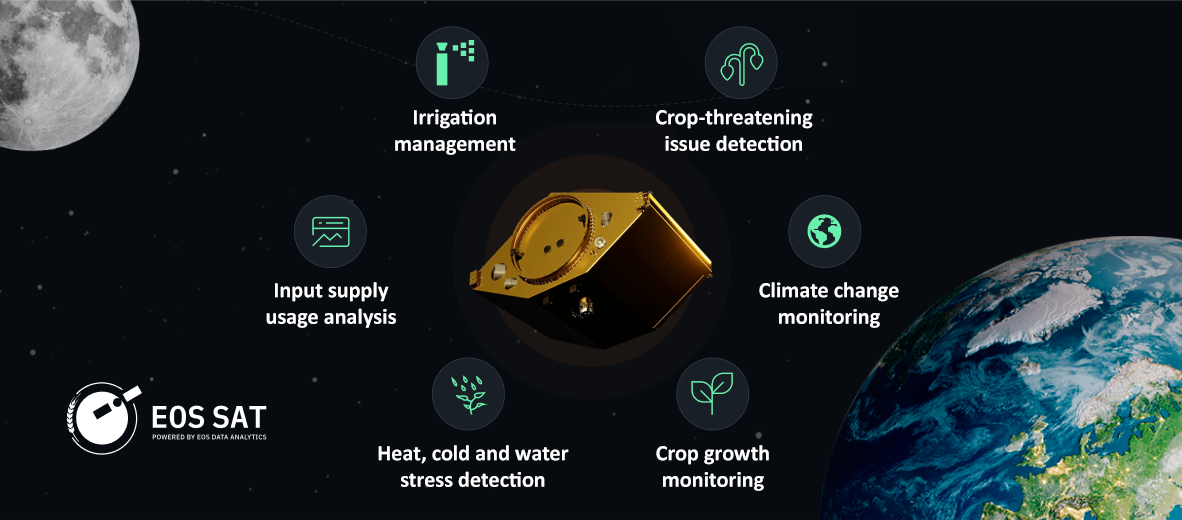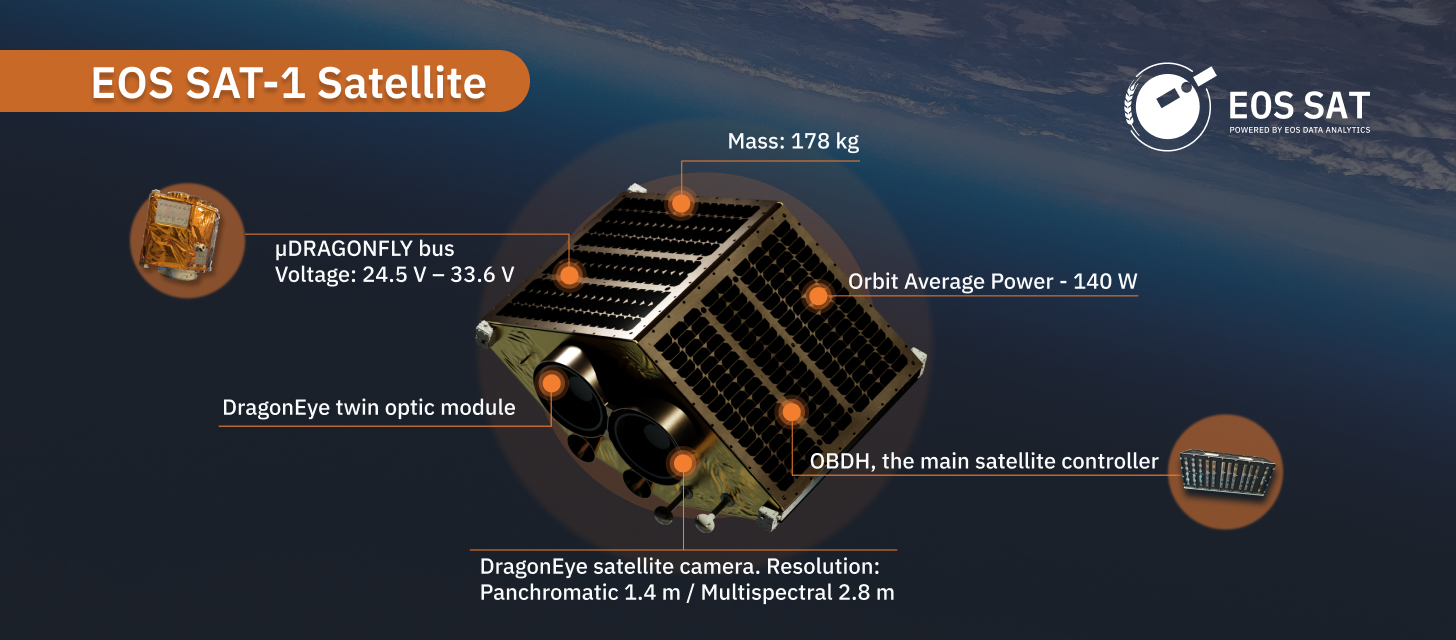EOS Data Analytics has successfully launched the first satellite of the world’s first agro-focused constellation, created entirely within the framework of the Noosphere project group. The satellite has transmitted telemetry and systems status data, confirming the start of its operation in orbit.

On January 3, 2023, EOS SAT-1, the initial satellite of EOS SAT, the first agri-focused satellite constellation launched by a remote sensing company, was successfully delivered into a low Earth orbit by SpaceX’s Falcon 9 rocket from the Cape Canaveral Space Force Station in Florida.
EOS SAT is a constellation consisting of seven small optical satellites created by EOS Data Analytics, a global provider of AI-powered satellite imagery analytics founded by Dr. Max Polyakov, to support the implementation of sustainable agriculture methods and environmental monitoring of forestlands by providing high-quality data for analysis.
The EOS SAT-1 satellite is a proprietary development of companies belonging to the Noosphere of Max Polyakov, an international entrepreneur in the field of IT and space technologies. A full-cycle operational process is established via vertical integration of the Polyakov’s Noosphere group of companies – EOS Data Analytics, Dragonfly Aerospace, SETS, and Flight Control Propulsion.
The satellite was built and equipped with two high-precision DragonEye cameras of the Ukrainian-South African space optics manufacturer Dragonfly Aerospace, the satellite engine was developed by the Ukrainian company SETS (Space Electric Thruster Systems), and the Flight Control Propulsion company provided 3-D printing of parts and manufacturing of body elements. As a global provider of satellite analytics, EOSDA will receive satellite images for further processing and provide its customers with high-quality data for making informed decisions in the agricultural sector.
After reaching full operation by 2025, EOS SAT will cover up to 100% of countries with the largest areas of farmlands and forestlands, amounting to 98.5% of such lands across the globe.
EOS SAT will assist agribusinesses in monitoring crop growth and detecting heat, cold, water stress, weed spread, pest attacks, and other issues threatening crops. The companies will also be able to optimize their input use based on productivity and vegetation maps provided by the constellation, test the effectiveness of new crop protection products or fertilizers, avoid unnecessary field inspections and thus reduce fuel use, manage irrigation, estimate yields, and more.

EOS SAT-1 monitors up to one million square kilometers daily using 11 agri-related bands. Yet even with only one such satellite in the sky, EOSDA customers unlock the potential to implement precision agriculture practices and thus reduce CO2 emissions, cut energy consumption, decrease water usage, and more.
“I would like to congratulate the entire team of EOS Data Analytics on the launch of EOS SAT-1. This launch brings new game-changing possibilities of satellite technologies to the agricultural industry. EOSDA will now work with proprietary datasets to provide even deeper and more accurate insights for its customers and partners,” adds Artiom Anisimov, CEO of EOS Data Analytics.
By 2025, the constellation will monitor up to 12 million square kilometers on a daily basis. Its satellite cameras will generate panchromatic and multispectral imagery using 13 agri-related bands to provide specific information about the required aspects of the land in question.
“We’re excited to be the technology partner for EOS SAT, the first commercial constellation tailored specifically to agriculture needs. The demand for high-performance, compact and lightweight satellites keeps growing each year providing a great market for our imaging products. At the same time, it is great to have a customer with such a clear focus on addressing issues that are key to the sustainability of life on the planet. Having an agri-focused set of sensors, EOS SAT will collect the data that can actually help decision makers take care of the Earth and maintain its biodiversity while providing food security for its many people,” comments Bryan Dean, CEO and co-founder of Dragonfly Aerospace.

At the moment, most competing companies are forced to work with the data provided by third-party satellites, which makes them dependent on the quality of their sensors, the frequency of imaging, and other parameters they have no control over. Being oriented specifically at the needs of the agriculture industry, EOS SAT will provide unprecedented amounts of data for EOSDA as often and detailed as the company’s clients need.
To address the issues of existing satellites, such as low sensor resolution, limited spectral capacities, and poor performance during cloudy weather, EOS SAT satellite cameras will capture imagery using 13 agri-related bands: RGB, 2 NIR channels, 3 RedEdge channels, WaterVapor, Aerosol, Pan, and 2 SWIR channels. EOS SAT-1 will have 11 spectral bands, excluding the SWIR bands.
EOS SAT-2 and the following satellites are expected to get into orbit within 2023-2024. The full operational capability of the EOS SAT constellation is scheduled to be achieved in 2025.
Follow us on Twitter to get the most interesting space news in time
https://twitter.com/ust_magazine

